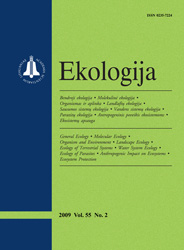 ISSN 0235-7224 ISSN 2029-0586 (online) |
2007 m. Nr. 2.priedas Urbanistic assessment of city compactness on
the basis of GIS applying the COPRAS method
Sustainability is very important to modern societies. Current patterns of land use and development are environmentally, economically, and socially destructive. Cities have occupied great territories, and it is already difficult to discern their borders. Sites of service objects also do not become obviously certain. Such a scattered urban structure causes numerous problems on the global and local scale. On the global scale, it is climate warming, bigger CO2 emissions and higher pollution, and on the local scale it implies dependence on automobile, congested roads and non-vital environment inside the cities. The concepts of sustainable future development of cities are always focusing on these main problems. In the present paper, ensuring sustainable development through implementation of compact city principles is discussed. The existing city structure in terms of sustainable compactness is described as a multidimensional object. City territory is divided into cells according to similarity of character. The application of a multi-criteria Complex Proportional Assessment method (COPRAS) for evaluation of city cell adequacy to a theoretical sustainable compact city is offered. The method is combined with the geographical information system for the purpose of an efficient calculation of parameters and visualisation of city compactness. On the basis of the geographical information system, the databank of inhabitants, addresses, stops of public transport and public visiting places is prepared. This technique will help town planning authorities and city planning specialists to establish and localize problems of building density in an urban territory, to strengthen the integrated approach and substantiate the decisions. The model is applied to the Kaunas city. Keywords: sustainable development, compactness, urban structure, population density, GIS, multi-criteria, COPRAS method |
Issues:
2011 - Vol.57 No. 1, No. 2 2010 - Vol.56 No. 1-2, No. 3-4 2009 - Vol.55 No. 1, No. 2, No. 3-4 2008 - Vol.54 No. 1, No. 2, No. 3, No. 4 2007 - Vol.53 No. 1, No. 2, No. 2.priedas, No. 3, No. 4 2006 No. 1, No. 2, No. 3, No. 4 2005 No. 1, No. 2, No. 3, No. 4 2004 No. 1, No. 2, No. 3, No. 4 2003 No. 1, No. 2, No. 3, No. 4 2002 No. 1, No. 2, No. 3, No. 4 2001 No. 1, No. 2, No. 3, No. 4 |